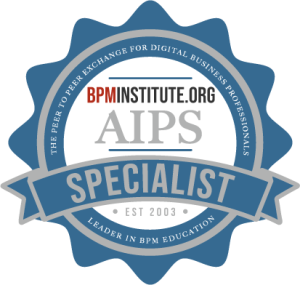Home / Resources
Resources
Discover a Wealth of BPM Knowledge and Expertise at BPMInstitute.org!
Transition of a Business Analyst to a Business Rules Analyst
Who is a Business Analyst?
Business analyst studies the overall business and information needs of an organization in order to develop appropriate solution strategies. As the key liaison between business and information technology departments, the business analyst is responsible for gathering and documenting business requirements and translating them into functional system design specifications that can be successfully executed by IT development teams. A business analyst acts as the communication central between the business and the technology people.
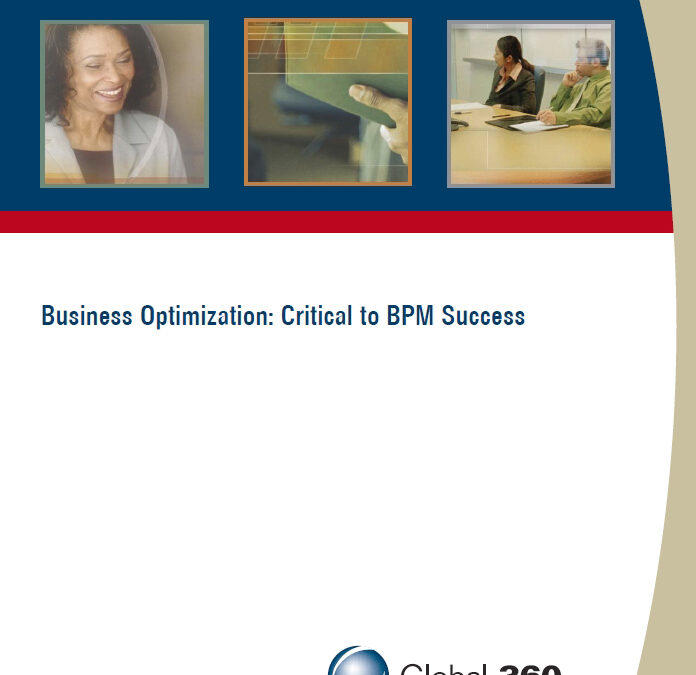
Business Optimization: Critical to BPM Success
The key advance of optimization over traditional BPM technologies is the ability to address both the real time optimization of individual processes in flight as well as the ability to identify strategic changes to business processes to drive long term value and cost savings. This dual mission of optimization drives efficiency improvements as well as increased process effectiveness, or alignment with business process goals and performance indicators.
Sarbanes-Oxley Compliance Can Lead to Great Improvements in Company Alliance and Partnership Results
The Sarbanes-Oxley Act of 2002 has caused big changes in big business with a hefty price tag. Not only must publicly traded companies document and comply with the financial reporting and internal audit control requirements of the Act, they must also continuously attest, measure and document changes of the related processes to ensure continued compliance.
The challenge of complying with Sarbanes-Oxley requirements inside of a company is notably a time-consuming, costly and arduous task. The good news is that the internal control systems that companies are building will

Business and IT Alignment: Is it for real?
BPM is touted as the technology that will finally bring business and IT together. Not that we haven’t tried to do this before. For instance, many people thought object orientation would do the trick since it tried to model the real world as closely as possible. Did it deliver? To a certain extent, but not quite. Primarily, it ended up as a productivity tool and paradigm for IT (with sometimes questionable success), not the ‘be all’ and ‘end all’ for modeling and executing business requirements.

Solving the Business/IT Alignment
David Heidt, a Managing Partner at Enterprise Agility, works with Fortune 1000 clients in the areas of business process analysis, requirements management, iterative development and implementation of enterprise solutions using model-driven development. Heidt is also President of the Chicago Chapter of The Association of Business Process Management Professionals.

Service Oriented Architecture: How to Invest Today Without Shooting Yourself In The Foot Tomorrow!
Please join SOAInstitute.org for the first in a series of Round Tables featuring SOA Thought Leaders. This recently recorded Round Table features individuals responsible for driving “Services Thinking” at Sun, Software AG, IONA and BEA. Don’t miss this opportunity to hear from the CTOs and Chief Architects from these organizations – we’ll debunk several myths, discuss the future of SOA and provide you with an SOA Reality Check.
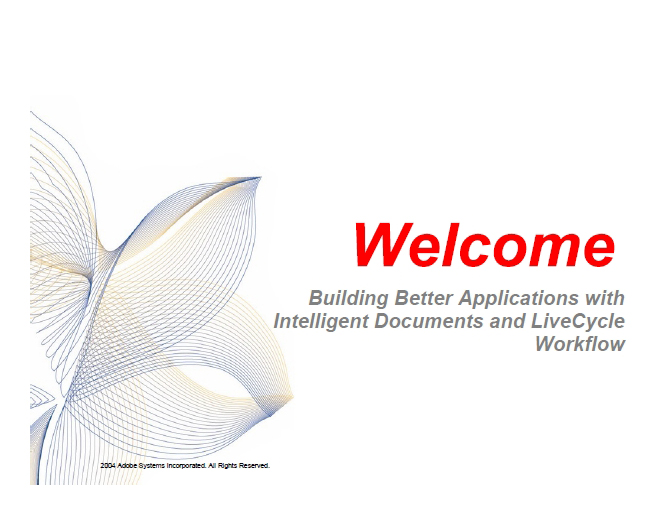
Building Better Applications with Intelligent Documents and Adobe LiveCycle Workflow
Complex and conflicting workflows in large organizations are time consuming and costly. These often lead to errors which are counter productive and slow down work processes.
Adobe’s LiveCycle Workflow and Intelligent Documents make application building fast and easy for Java developers. With its flexible tools and business logic-embedded PDF formats, multiple work systems are streamlined and automated minus the coding.

You Need BPMS to do BPM
“To do good work, one must first have good tools.” – Chinese proverb
The acronym BPM means business process management.

The Human Focus of Business Processes and Systems
Strategic Business Plans and end-to-end Business Processes are important.

Understanding Business Data: The Key to Business Rule Extraction
Large-scale information systems are impacted in a variety of ways as organizations retool business processes and undergo related transformations. Whether migrating, redesigning, consolidating or replacing existing systems, analysts need to gain a better understanding of underlying systems functionality.

BPM and Business Rules Technology Provide A New Paradigm for Business and IT
In many organizations today there exists a communication gap between the business community and the IT organization that is so commonplace that its existence is virtually taken for granted. This gap exacts a heavy toll on an organization by preventing business domain experts from knowing how their business is really working.
Business Value of Process Standards
If you don’t have the time to listen to this issue’s Featured Archive, this article serves as an Executive Summary of the presentation, “Business Value of Process Standards” by Jeanne Baker, Director and Chair of BPMI.org and Sterling Commerce. Baker discusses the emerging PBM standards, which will help companies of all sizes benefit from BPM by identifying new opportunities for growth and competitive advantage.

BPMS Watch: Selecting A BPMS
Monthly Column by Bruce Silver, Independent BPMS Industry Analyst
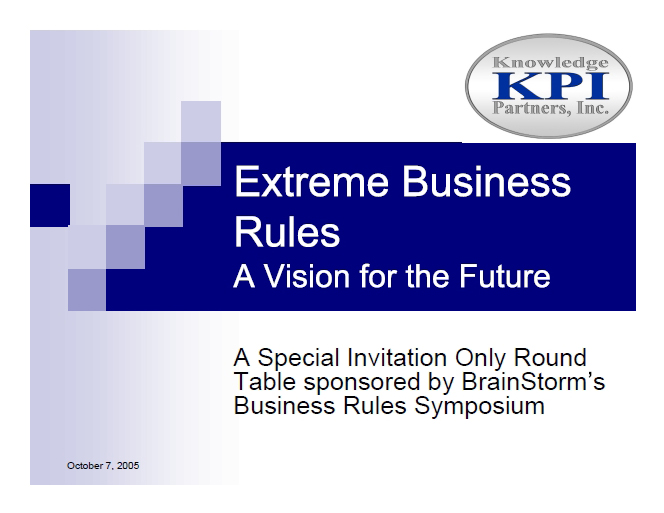
Extreme Business Rules: A Vision of the Future
In this Round Table moderated by Larry Goldberg of Knowledge Partners, Inc. (KPI), featuring James Taylor of Fair Isaac, Russell Keziere of Pegasystems, Bob Evory and Mannes Neuer of Sapiens Americas, and Sumeet Malhotra of Unisys cast their eyes to the future, and draw for us a picture of the world of Business Rules two to five years out.
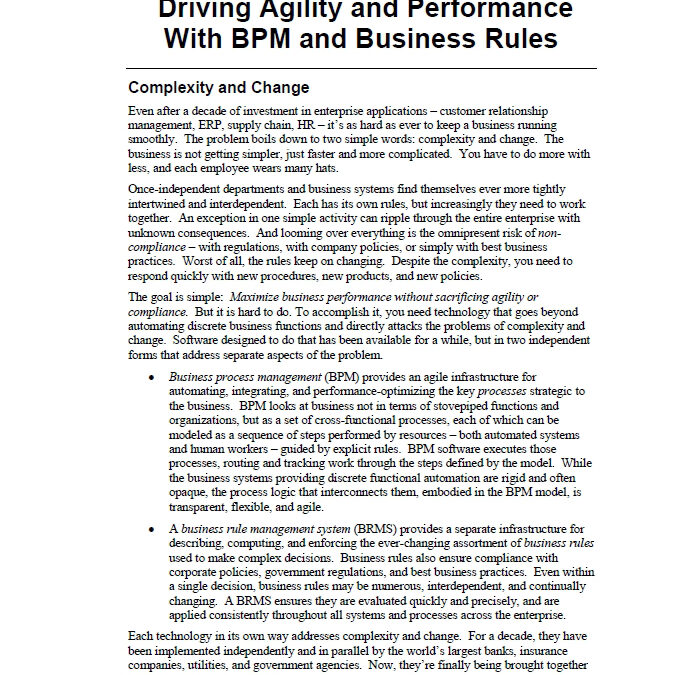
Driving Agility and Performance
Both Business Process Management and Business Rules Management software provide significant value in helping organizations to automate processes and become more consistent in their business operations. Each technology also has its own unique benefits — this white paper describes the roles and benefits of both, and shows how a combined BPM – Business Rules solution can radically improve the agility, consistency, precision and overall performance of your business.
Service-Oriented Architecture Implementations ‘Flattens the World’
Thomas L. Friedman’s book, The World is Flat, provides several helpful insights into current business and technology environments. Some of these insights bear directly on the Service Oriented Architecture (SOA) world, particularly with regard to how services can be accessed and used regardless of geography or technological origin.
In the non-SOA world, applications and architectures are designed with a single or limited use.

Aetna Facilitates Business Rules Development in Key Project
![]()
This interview originally appeared in the members only BPM Strategies Magazine. Join today to receive your own copy.

Fragmented Business Processes Destroy Value
When organizations become fragmented, it requires more work to deliver value to the customer and the ability of the organization to adapt to environmental changes is diminished. In extreme cases, the loss of value is deadly and businesses go extinct.
What causes businesses to become fragmented?
Business fragmentation occurs when critical processes aren’t managed as an integrated system. Workflows become a complex series of handoffs between functions, jobs and information systems. Each handoff represents an opportunity to introduce error, delay and added cost.
When organizations become fragmented, it requires more work to deliver value to the customer and the ability of the organization to adapt to environmental changes is diminished. In extreme cases, the loss of value is deadly and businesses go extinct.
What causes businesses to become fragmented?
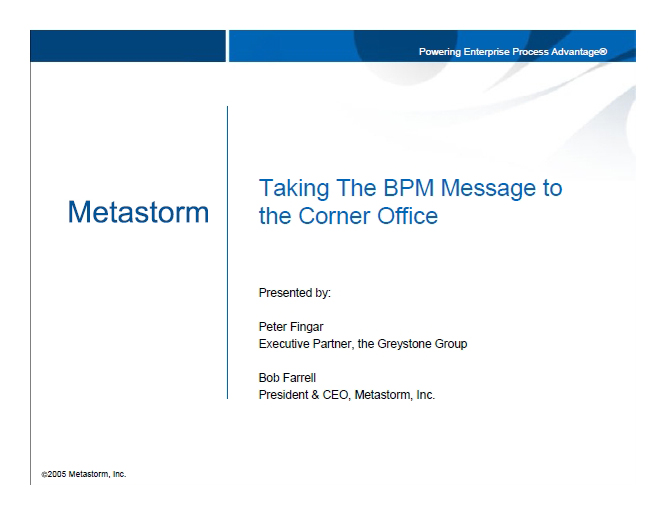
Taking The BPM Message To The Corner Office
As long as the BPM dialogue is restricted to technologists and BPM insiders, it’s likely to become just another technique for squeezing out costs and making incremental performance improvements. Taking the message to “corner office” executives places BPM in its proper business context and positions it to its full potential as a technique to achieve sustainable competitive advantage. CIOs and their organizations must alert other C level executives about the true business case for BPM: It’s all is about time-based competition and setting the pace of innovation in your industry.
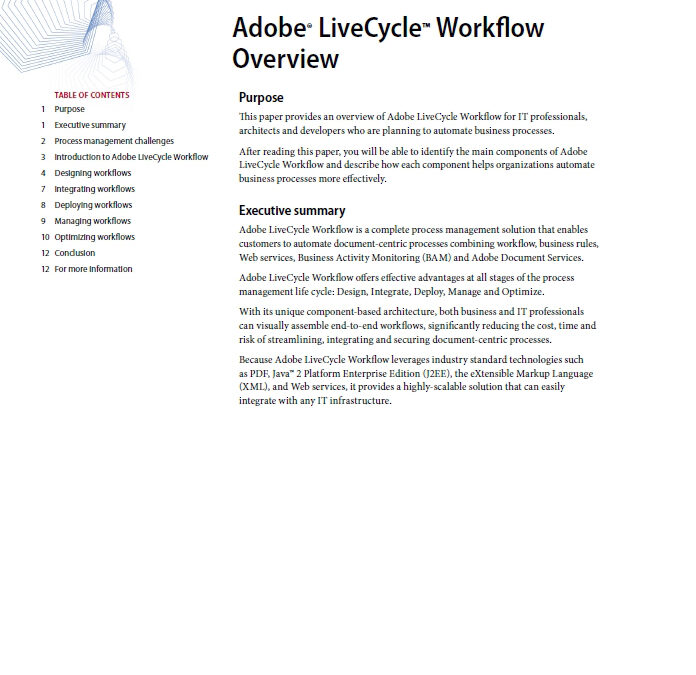
Adobe LiveCycle Workflow Overview
Adobe LiveCycle Workflow helps organizations design, deploy and manage automated business-process applications that connect systems and human interactions. This paper is an ideal introduction for professionals, architects and developers who are planning business-process automation.










